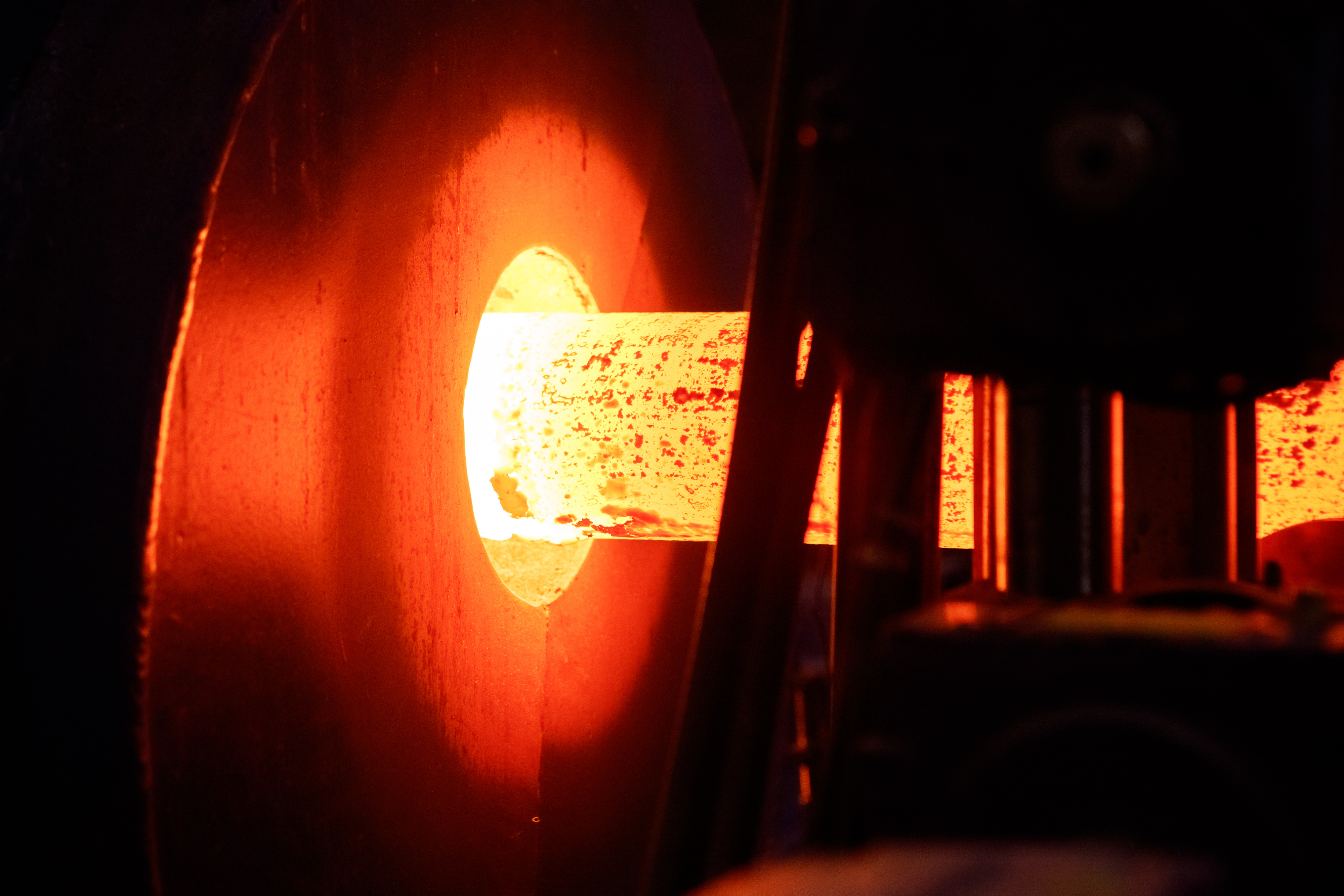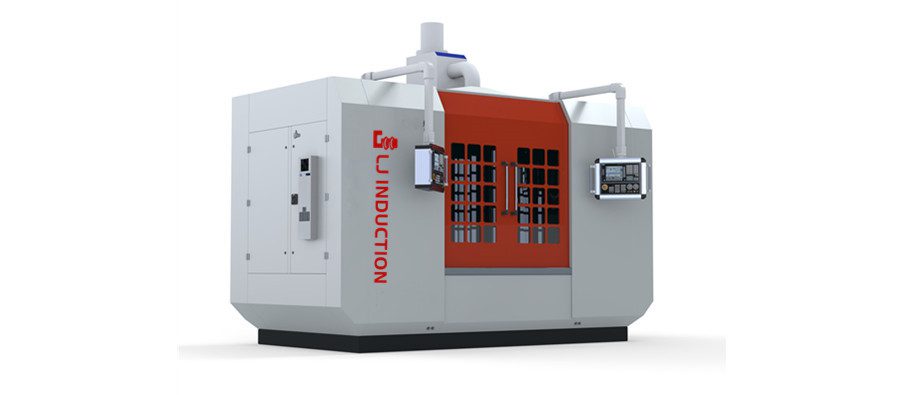INDUCTION HEATING
17000sets of LJ Induction heating solutions have been installed in over 50 countries.

WHAT IS INDUCTION HEATING AND HOW DOES IT WORK?
The induction heating method is to transfer electrical energy to the heated electrically conductive materials workpiece through induction coils, and then the electrical energy is converted into heat energy inside the metal workpiece. Therefore, we call this heating method induction heating. The main principles followed by induction heating are electromagnetic induction, penetration depth, skin effect, proximity effect, and circular effect.
Induction heating is actually electrical heating that uses electromagnetic induction to generate eddy current heat into the body to avenue the heated workpiece, which relies on an inductor to transfer electrical energy to the heated metal through electromagnetic induction. Electric energy is converted into heat energy inside the metal to achieve the purpose of heating the metal.
Induction Heating Systems: what does the induction heating machine consist of?
In the Chinese induction heating market, there are two existing models being produced, analog controlled induction heating equipment and intelligent induction heating equipment. The two machines differ in various aspects such as usage, heating efficiency, maintenance, and after-sales service. Below is just a brief introduction, if you want to know more, please click here to go to more details.
Analog control induction heating equipment:
The main control circuit is controlled by an analog circuit, usually the main machine with a capacitor machine. This kind of induction heating machine is small in size and very easy to install and use. However, because of its main design, there will be defects such as temperature control cannot be extremely accurate, poor control of IGBT over zero point, and high power consumption of core power components. Therefore, this type of induction heater is very cost-effective and easy to operate and is widely used in various industries.
Intelligent induction heating equipment:
The new generation of intelligent induction heating equipment: the use of digital circuit control, high precision temperature control, IGBT over zero point precision control in the soft switching state, the main circuit resonant frequency automatic tracking, according to the workpiece changes automatically adapt to the load to ensure that the circuit is in the resonant state so that the entire equipment output efficiency is very high.
Intelligent induction heating equipment has the following characteristics:
- the core part of the control: generally using the world’s most advanced high-speed digital signal processor (HDSP), and the use of special chips as an auxiliary processor.
- the inverter parts, generally using a high-efficiency fast resonance control mode, inverter efficiency greater than 95%, the host power factor greater than 0.9.
- the equipment has a combination of air-cooled and water-cooled design structures.
- control mode: all digital high efficiency fast resonance, can adapt to various parameters of the inductor, intelligent equipment power supply is generally built-in digital PID temperature control module.
- with IO interface: analog output, analog input, IO output, and IO input interface, RS232 or RS485 communication interface.
- the communication interface can be connected to a special data logger. power adjustment mode:
- stepless adjustable can be adjusted from 5% to 100%, resolution using 0.1 ﹪ level, power output stability can reach ± 1%.
How to choose the induction heating machines’ frequency, output power and current?
In the searching of an induction heating machine, the choice of power, frequency is particularly important, to heat the same workpiece to choose a high power equipment heating time is short, low power equipment heating time is long.
According to the heating power density to choose the right frequency, output power and current
The principle of induction heating power supplies is the eddy current effect, and the eddy current effect of the depth of action is inversely proportional to the frequency, so the heating depth required to use a lower frequency, the heating depth required shallow use of higher frequency. As for the power is determined by the size of the workpiece, the larger the workpiece, the greater the power required.
According to experience to choose the power density and heating time
In actual manufacturing, often according to the existing production practice data, consider the workpiece required current frequency and the required equipment power. LJ Induction always provides customers with free induction heating solutions and supporting experiments, and we also have thousands of experimental case videos to let you predict the heating effect more intuitively.
What materials can be heated by induction heating?
Induction heating is capable of heating non-magnetic metallic materials as long as the non-magnetic material is electrically conductive and capable of generating eddy currents in an alternating magnetic field. These types of metals are usually steel, stainless steel, aluminum, copper, gold, silver and others. In addition, with the addition of a suitable crucible, radiation, convection and conduction heat transfer can be carried out by the heat generated by the crucible.
The inductor is an energy converter that converts electric current into a magnetic field to inductively heat the electrically conductive materials part. Because of its constant heat generation, it requires constant circulation of cooling water to keep it stable.
How to make an induction coil?
When making induction coils, we need to pay attention to the following points
Structure and shape of the induction coil:
The structure and shape of the induction heaters’ coil should be designed in accordance with the technical conditions of the heat treatment of the part to obtain the required heating zone and heating layer (that’s why we always ask the customer for the size of the part and the size of the part to be heated). Also, the smaller the gap between the shape of the induction coil and the heated surface of the part, the better. The smaller the gap, the less magnetic leakage; less magnetic leakage (magnetic loss), the higher the electrical efficiency.
Easy operation and loading and unloading:
inductor strive for a simple structure, easy to manufacture.
Cooling:
The induction heating coil should be well cooled, and the flow and pressure of cooling water should be in balance.
The coil should have sufficient mechanical strength and service life.
When we use high frequency induction heating equipment, this problem is not serious. But when we use medium-frequency induction heating equipment, we need to pay special attention to this problem. Because in the alternating magnetic field, there is the electromagnetic force between the induction coil and the part, the higher the current, the greater the electromagnetic force.
In addition to the above factors, we should also consider the internal adjustments of the induction heaters. Because many factors can affect the heating results, each machine is custom adjusted by LJ Induction to match the coil and optimize its coupling efficiency.
LJ Induction holds several patents for medium frequency forging, and we have a variety of solutions for dealing with induction heating coils in order to get more power efficiency from the inductor.
Induction heating applications: what do induction heating systems do to metals?
Welding:
soldering, brazing of various products, various tool blades, welding of the same kind of dissimilar metals, welding of copper and steel pipes, welding of saw blades and saw teeth.
Heat treatment:
local or overall heat transmission, tempering, pipe and another annealing, hardening of various metals.
metal melting:
gold, silver, copper, iron, aluminum, and other metals (vacuum) melting, casting molding, and evaporation coating.
thermoforming:
hot upsetting, hot rolling, whole and partial forging.
Other applications of induction heating machines:
toothpaste skin heat sealing, powder coating, metal implant plastic, semiconductor single crystal growth, shrink fitting, bottle mouth heat sealing, etc.
The advantages for induction heating machines:
No deformation of the workpiece:
Induction heating equipment does not need to heat the workpiece as a whole, but can selectively heat the local area, so that it can achieve the purpose of less power consumption, and the deformation of the workpiece is not obvious.
Fast heating speed, low oxidation and decarburization rate:
The workpiece can reach the required temperature in a very short time, even within 1 second. Thus, the surface oxidation and decarburization of the workpiece are relatively light, and most of the workpieces do not need gas protection.
Easy to realize mechanical automation:
The induction heating equipment is easy to install in the production line, easy to realize mechanization and automation, easy to manage, can effectively reduce transportation, save manpower and improve production efficiency.
Multi-use:
It can complete heat treatment processes such as hardening, annealing, tempering, normalizing and tempering, as well as welding, melting, hot assembling, hot disassembling and heat-transfer forming.
Easy to use and operate with safety:
it can be turned on or stopped at any time. And no need to preheat.
A variety of operation modes:
manual operation, semi-automatic and fully automatic operation; can work continuously for a long time, can also be used to stop randomly. It is conducive to the use of the equipment in the period of preferential electricity price in the low valley of power supply.
Environmental protection and energy saving:
high utilization rate of electric energy, safe and reliability, good working conditions for workers, advocated by the state, etc.
The disadvantages for induction heater:
No product is perfect, and the usual induction heater also has some disadvantages. For example, the equipment inside the design is complicated, the cost of investment is relatively high, the interchangeability and adaptability of induction parts is poor, and it is not suitable for application on some complicated shapes of electrically conductive material workpieces.
LJ Induction, after 17+years of experience in induction heating solutions manufacturing, has simplified the internal structure of the machine, making it more durable and less prone to damage; AI automatic tracing system can automatically match the inductor to overcome the problem of poor adaptability requiring frequent adjustment of capacitance; single power and double power machines can complete more complex shapes with higher requirements for heating.
Considerations When Buying induction heater:
1. The development of heating scheme:
whether it meets your heating requirements and the mechanization/automation of the whole production line.
2. Ease of use and installation of the machine:
due to covid-19, engineers can no longer travel abroad for installation. Remote guidance and the design of the machine itself are especially important.
3. Machine quality:
We need to know, first of all, where the most easily damaged parts of the machine are, how to detect them and how to repair them. We have written an article on this subject, please click to go.
4. delivery time
5. Price:
Some programs may be more expensive, but it’s expensive in the rationality of the program, the quality of the machine and the service of the factory. And some machines are much cheaper than their counterparts, that the factory’s profits are bound to be reduced, then this factory may invest less in quality and service. No one wants to buy a machine that runs less than a year before it breaks down, and can not find the manufacturing engineer to solve it.
LET US HELP
we are dedicated to providing the best suitable induction heating solutions for our customers. Our mission starts with our free testing & solution, in which we solve the most challenging heating applications, confirming the heating process that can benefit from our systems.



